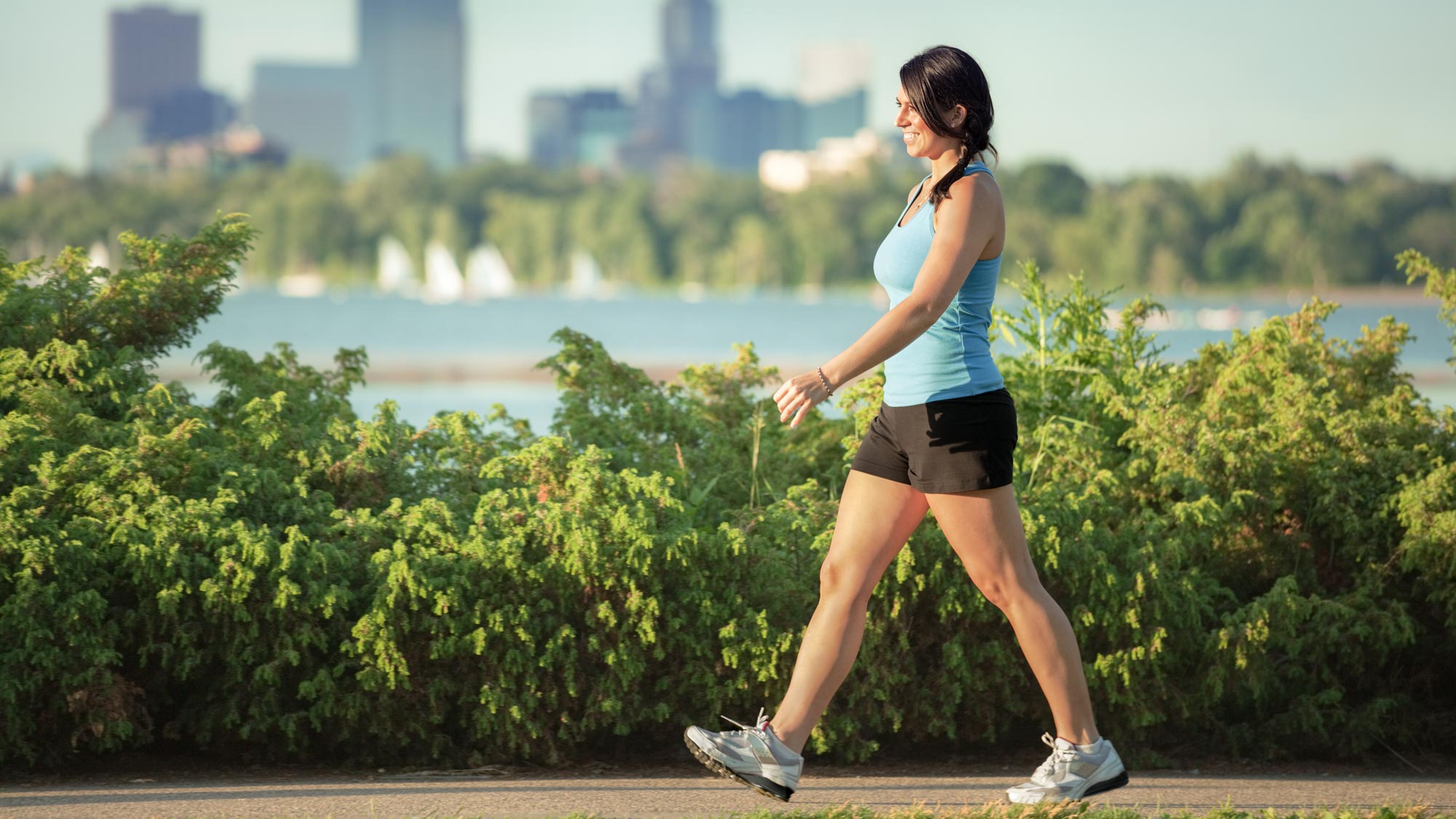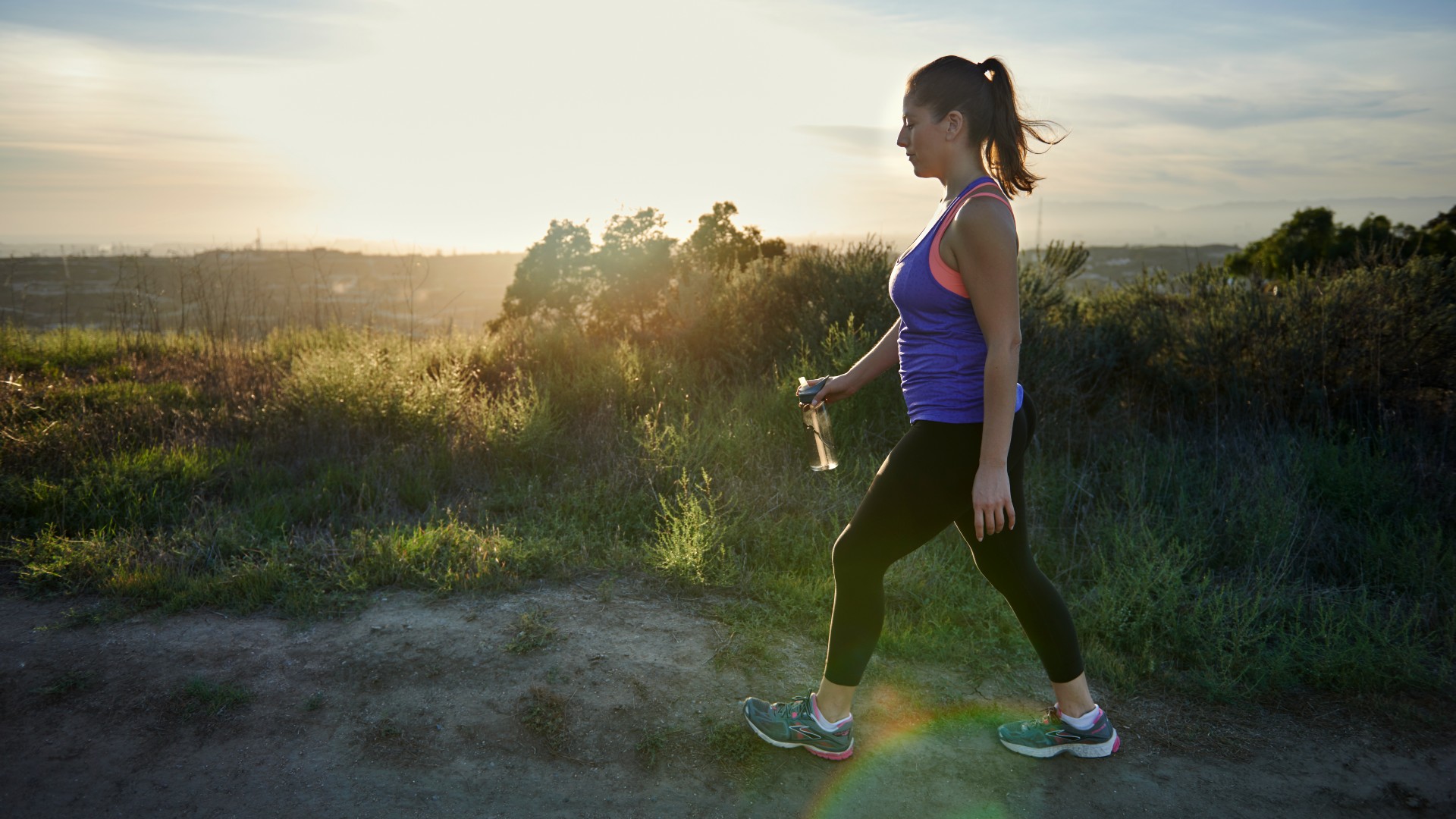
I’m a big fan of a good, long walk. Whether I’ve got 10 minutes or two hours, I’m always keen to lace up a pair of sneakers and get outdoors to stretch my legs.
The benefits of walking are well-documented, improving your physical and mental wellbeing while remaining accessible, low-impact and enjoyable. A walk can be five minutes to the local shop for groceries or a day hiking with the dog out in nature. And making it a daily part of your everyday routine could build mental strength as well as a more robust cardiovascular system and body.
When your daily walk feels stale, I recommend trying out this 20-minute walking workout to give your metabolism a lift while strengthening your mind, body and spirit. Here it is.
What is the 20-minute walking workout?
A walking workout with weights may slightly increase overall calorie burn and build lower body strength, but the main goal of this routine is to increase your step count and work on steady-state cardio while slowly increasing resistance on your legs, so you don’t have to use weights unless you want to.
This takes 20 minutes to complete and works well as an EMOM (Every Minute On the Minute). Although walking in nature has been shown to boost mood and wellbeing, the routine is better controlled using one of the best treadmills at home or in the gym.
Spend the first two minutes gently warming up at a comfortable walking pace. Every 30 seconds, add 1-2% incline and increase the pace to slowly ramp up your heart rate and get your legs working. The incline should help warm your glutes and hamstrings, and you can add some shoulder rolls while you walk.
If you still prefer to exercise outdoors, try to find a hill or staircase you can use as a set incline and focus on mixing up your speeds instead, moving between an all-out power walk and a gentle stroll for recovery.
EMOM:
- Minute 1: Flat road walk @ 4-9 km/h
- Minute 2: Add 3% incline and 1-2 km/h to your speed
- Minute 3: Add 3% to your incline and 1-2 km/h to your speed
- Minute 4: Add 3% to your incline and 1-2 km/h to your speed
- Minute 5: Kill the incline (flat road) and increase speed to an all-out power walk
- Minute 6: Kill the speed to 5-8 km/h and add 9+% incline
- Repeat for 3 rounds.
The inclines and speeds are just guidelines. Pace is very personal, so use RPE (rate of perceived exertion) to determine how the workout feels. Not challenging enough? Add more incline or speed. If you’re unable to hold the pace or incline for the full 60 seconds, reduce one of them.
The first minute should be the lowest effort and the last few minutes should really challenge your glutes, legs, core and lungs, reaching an 8-9/10. You could add a set of dumbbells to load your legs and glutes more, but not all of the best walking workouts need them — it should feel punishing enough on your muscles without.
Are walking workouts effective?

Yes! Just 30 minutes of walking per day can be beneficial, improving the flow of oxygen-rich blood around your body to your muscles. Whether walking for weight loss or not, walking regularly reduces your risk of developing chronic illnesses and can help strengthen your lower body joints, bones, ligaments and muscles.
As we all age, muscle atrophy and bone density loss become more prominent, so activities such as walking, running and resistance training can help combat this and contribute to osteogenic loading — loading bones to stimulate growth.
My favorite benefit is the positive impact on mood and emotional regulation. Although you don’t need to be outside to reap the rewards, research shows spending time in nature and walking boosts mood and creativity. You could walk in silence or plug in headphones and listen to music or your favorite podcast while you move.
Finally, adding bursts of walking activity into your daily routine builds into the process called NEAT — energy expenditure unrelated to workouts. In fact, workouts only contribute toward a small percentage of overall calorie burn, so the movement you add outside of this is where you can really make an impact.
Clocking up extra steps during the day can boost your metabolism, and if bitesize is all you can manage, be sure to prioritize bitesize movement regularly — taking the stairs, standing up whenever you can, or getting involved in playing with your pets or children all count!
We know it’s satisfying to close your Apple watch rings, but remember that exercise should feel good first. Sometimes it can be useful to shut your fitness tracker off and focus on how the movement feels to you.







